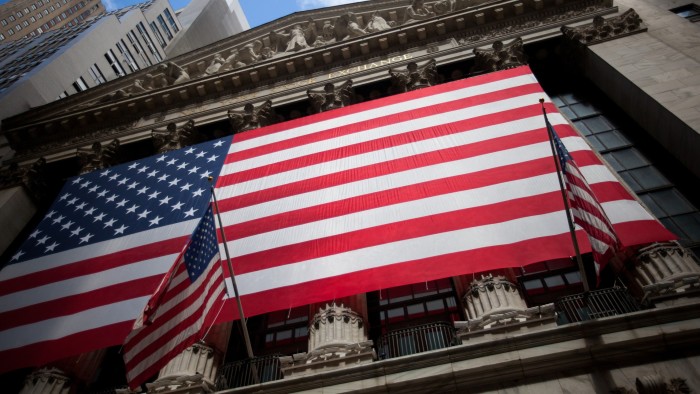Unlock the Editor’s Digest for free
Roula Khalaf, Editor of the FT, selects her favourite stories in this weekly newsletter.
It is starting to look as if investors are all talk and no action when it comes to the anything-but-America trade.
At the start of this year, and especially around the time of President Donald Trump’s full-fat “reciprocal” tariffs announcement in early April, it was all anyone could talk about — a disturbance in the force that has led every serious investor to rethink their reliance on the US.
Since then, though, a rather eerie calm has descended on markets, despite the grim escalation of violence between Israel and Iran. US stocks, as measured through the S&P 500 index, are back within shouting distance of record highs, having carved out an impressive 24 per cent recovery from the depths of April. Is America great again after all?
For some money managers, this is justification for a tried and tested strategy of holding your nerve through periods of market turbulence, and of buying the dip. Among them is Fahad Kamal, chief investment officer at private bank Coutts. “We didn’t sell anything” in April’s volatile market conditions, he told me. More broadly, “the world is overweight US for a reason”, he said. He intends to keep screening out political noise and maintain his focus on companies and their bottom line.
“Narratives come and go,” he said. “But the only north star is earnings growth — and in the US it’s still far superior.”
That is of course perfectly reasonable, and it is worth bearing in mind that we are one-tenth of the way through Trump’s second term. The scattergun economic policymaking that comes with him will pass, eventually.
It is still unwise, however, to assume the view of investors towards the US is not changing. Bank of America’s latest monthly fund manager survey shows that just under a quarter of investors expect US stocks to produce the best returns over the next five years. More than half think the winners will be international stocks. This flips the usual order of preference.
In a sense, this is already evident in markets, judging by the sparkling and rare outperformance of European stocks in 2025. It is a big mistake, however, to expect conservative investors to reconfigure portfolios overnight. In part, that is because it involves cutting loose from long-standing benchmarks, which tend to be weighted by the market capitalisation of their underlying component companies. That leaves the US with a roughly 60 per cent slice of global stocks indices, or 70 per cent of developed-market-only gauges.
Kaitlin Hendrix at Dimensional Fund Advisors said she had been fielding lots of enquiries from money managers on precisely this theme in recent weeks. The obvious problem, though, is that deciding to go underweight the US — parking a smaller proportion of funds there than global benchmarks would dictate — mechanically means going overweight something else.
“It should be a thoughtful decision,” she said. “It was not long ago — six months ago or so — that people were saying, ‘why would I invest in anything besides the S&P 500?’ The S&P was crushing it.” Now, the conversation is more around Asia but mostly Europe, and whether it makes sense to beef up investments there even at record highs — a tough call for a region renowned for producing disappointments.
For now, for many investors, the answer is to stick with business as usual, and keep pumping money to the US, but with much more robust stabilisers in the form of dollar hedging — protecting portfolios from the damage that comes from the slide in the buck.
This is just delaying the inevitable, however, as global markets undergo what Salman Ahmed, head of macro at Fidelity International, calls a “rewiring”. He said mercurial economic and geopolitical decision-making from the new US administration was “rewriting the rules of the game” and the examination by portfolio managers of whether it makes sense to park 70 per cent of an equity portfolio in Trump’s America was real. That is not least because the enormous slide in April was extremely painful, even if shortlived.
“The indices we are using are on autopilot, sending capital to the US,” he said. The tricky thing though is that, as Hendrix at Dimensional suggested, when so-called “real money” — pension funds, insurers and the like — makes the rare decision to tweak or diverge from benchmarks, this is a long drawn-out process.
Some brave souls involved in managing this money have to make the decision and more importantly, take responsibility if it goes wrong — a potentially career-damaging move.
In big public pension schemes, investment committees have to make the call. Outside intense crises, these committees generally meet once a quarter. A weighty decision, such as whether to break with a regional asset allocation that has been running for at least a decade and a half, takes time. And that’s especially so if it means dumping a benchmark and hoping stakeholders will understand if that involves posting weaker returns than the global indices at some points.
The real test of whether institutional investors put their money where their mouth is will take months.
katie.martin@ft.com
https://www.ft.com/content/a528dbfd-095c-45d1-b41e-32fe5c5f9c3b


